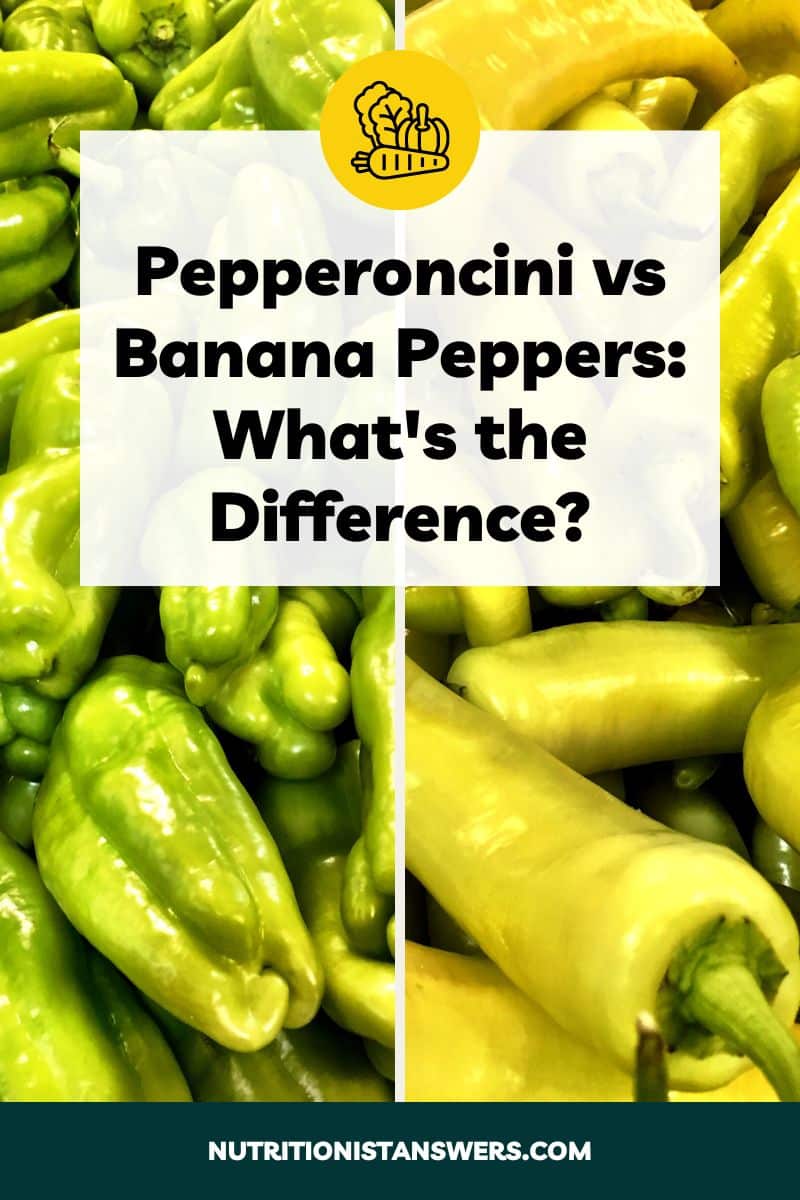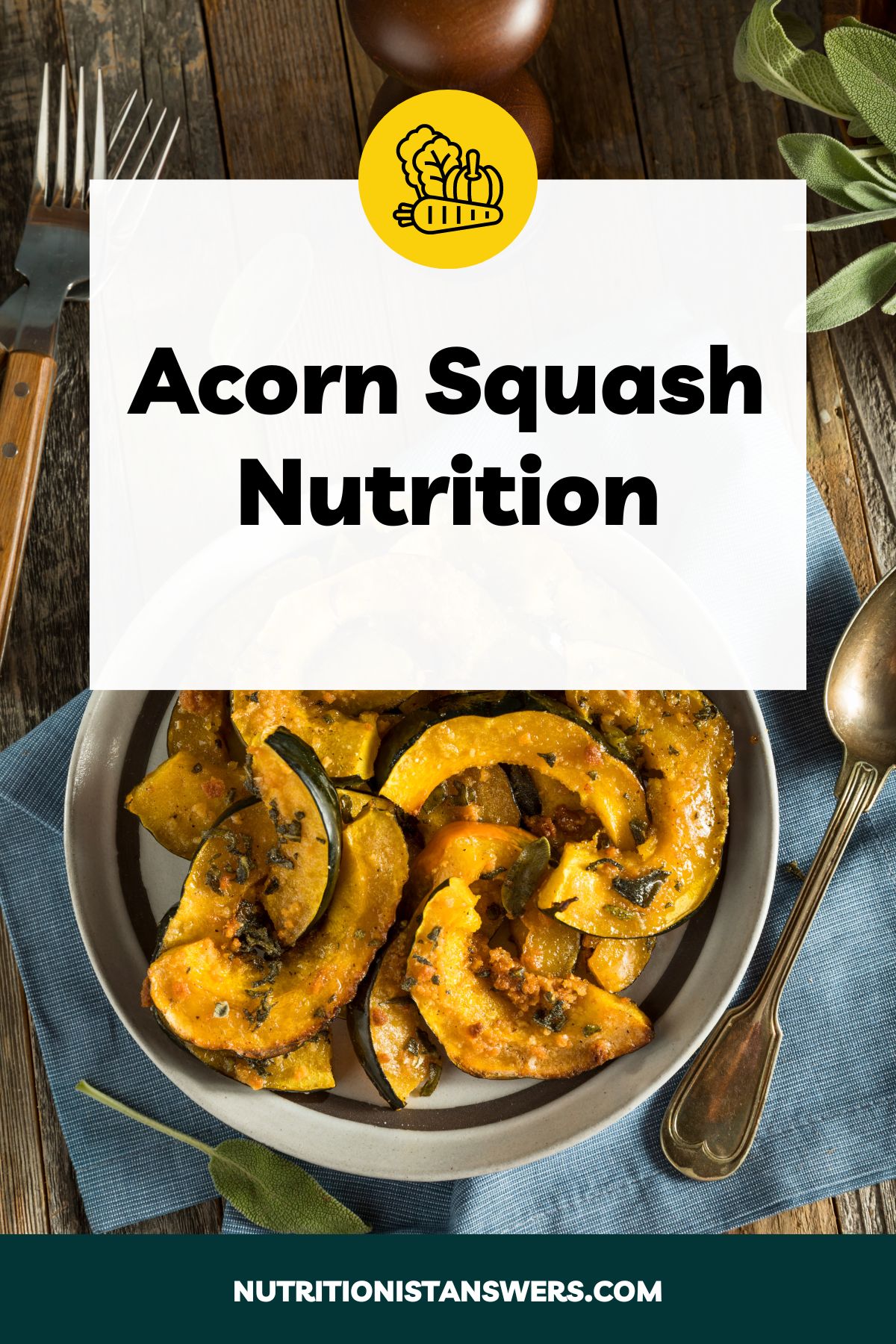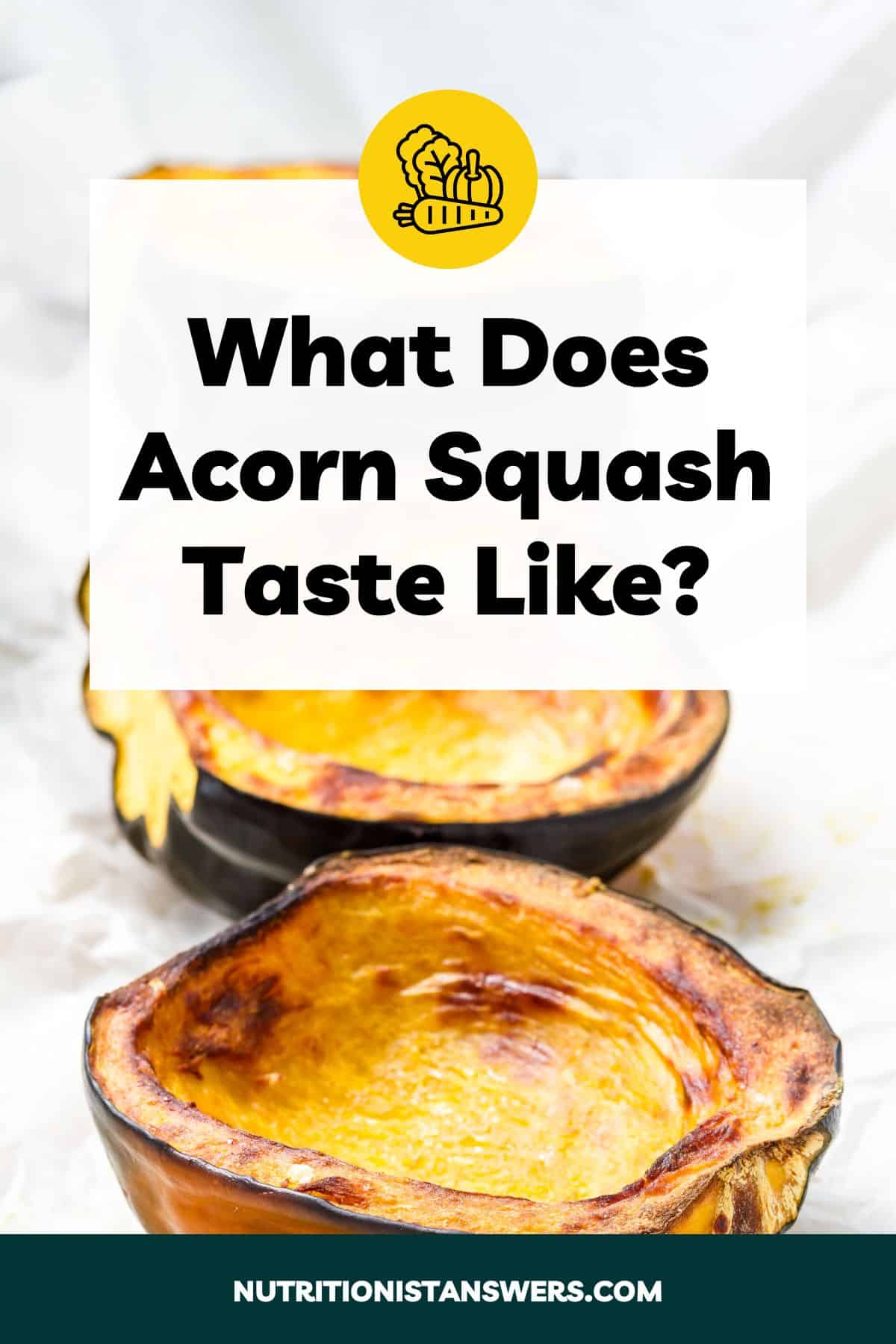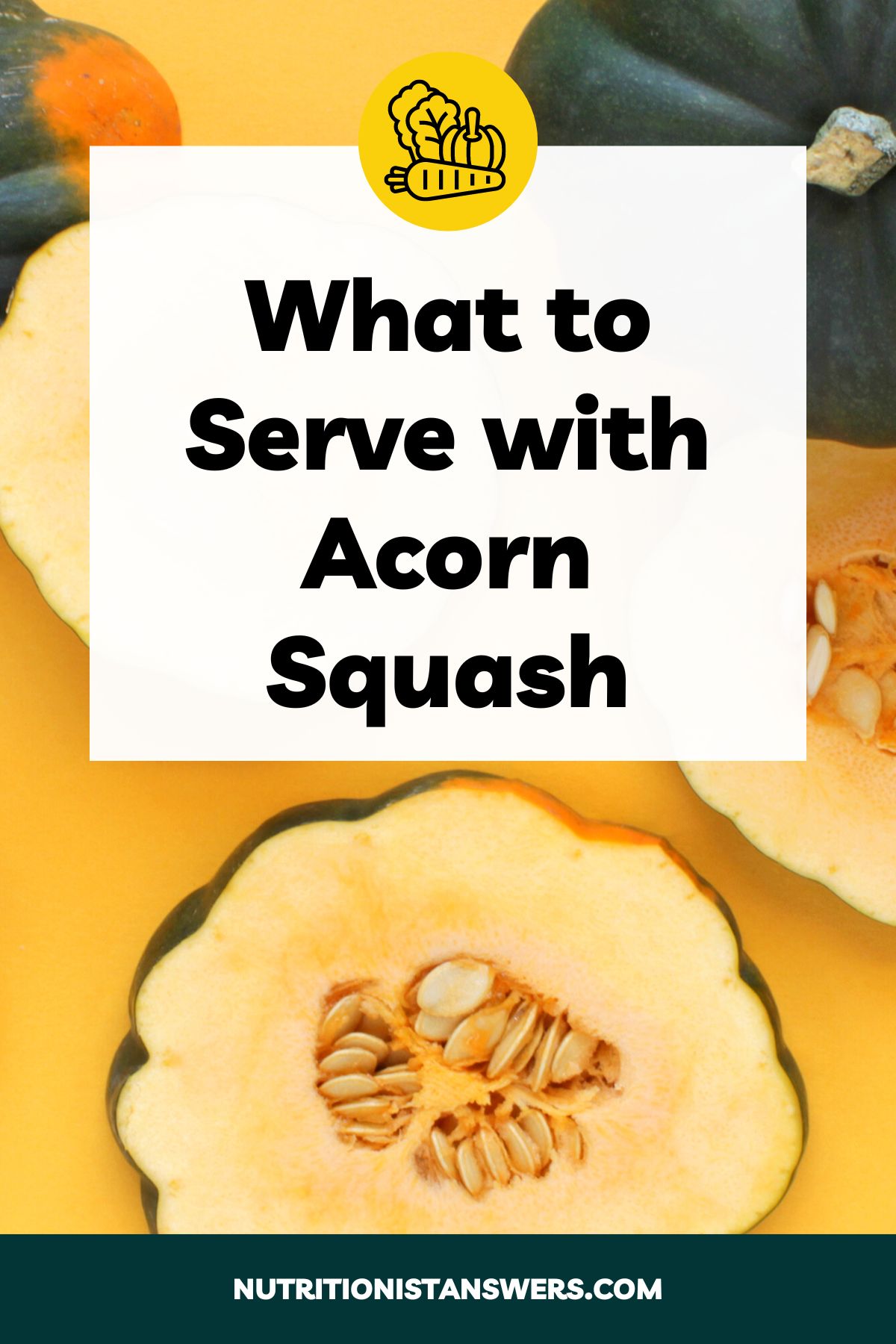Pepperoncini and banana peppers are both sweet peppers that are typically served pickled and have very similar flavors and uses.
Banana peppers and pepperoncini are sometimes mistaken for one another, but there are a few important differences in their appearance, texture, and heat level.
In this article, we’ll explore the similarities and differences between these two peppers, in terms of nutrition, taste, available forms, prices, and uses.
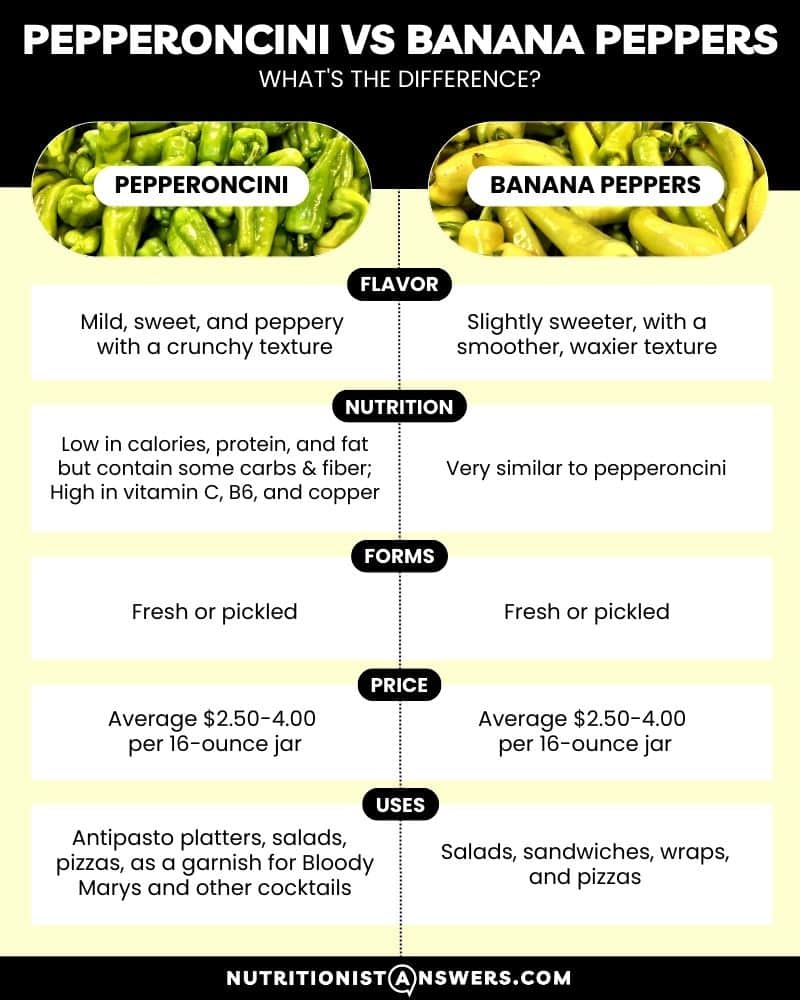
What are pepperoncini?
Pepperoncini is the generic Italian word for hot chile peppers. The singular version, if you’re just talking about one chile pepper, is pepperoncino.
In the United States, however, the term “pepperoncini” refers to a particular variety of sweet Italian pepper known as friggitelli.
Other names for pepperoncini include golden Greek peppers, Tuscan peppers, and sweet Italian peppers (1). They are 2-3 inches long and skinny with somewhat wrinkly yellow-green skin.
Fresh pepperoncini have a mild, sweet and peppery flavor and crunchy texture. However, most pepperoncini are served pickled, which makes them taste bolder, tangier, and more acidic.
With a Scoville scale rating of 100 to 500, pepperoncini are extremely mild and many people do not find them to be spicy at all. For reference, they are up to 80 times milder than jalapenos (2).
Pepperoncini can usually be found in the condiment and pickle aisle of most supermarkets, and are also available for purchase online through various grocery and gourmet food retailers.
Commonly used in salads, sandwiches, and antipasto platters, pepperoncini also add a delicious tang to pizzas and pasta dishes, while their mild heat makes them an excellent garnish for cocktails.
What are banana peppers?
Banana peppers are sweet peppers that belong to the Capsicum annuum (chile pepper) family along with bell peppers, jalapenos, and pepperoncini.
Named for their resemblance to the popular fruit, banana peppers are 4 to 6 inches long and skinny with a slightly curved shape and thin, bright yellow-green skin.
When eaten fresh, banana peppers are crunchy and mildly sweet. Most of the time, they are served pickled, which gives them a stronger, sweet and tangy flavor and slightly softer texture.
Banana peppers measure 0 to 500 on the Scoville scale and are considered very mild. In fact, some banana peppers may not have any heat at all (3).
You’ll find banana peppers in the pickled goods section at most supermarkets. Additionally, they can sometimes be found fresh at farmers’ markets and specialty produce stores.
Banana peppers, with their sweet and tangy flavor, are a versatile ingredient often found in salads, sandwiches, and pizzas, and they can also serve as a vibrant garnish for cocktails.
Pepperoncini vs banana peppers
Pepperoncini and banana peppers have similar sweet and tangy flavors and crunchy texture. However, banana peppers are sweeter and have a smoother texture, while pepperoncini are juicier and slightly bitter.
Both banana peppers and pepperoncini are mildly spicy, measuring 0-500 and 100-500 Scoville Heat Units (SHU), respectively.
In general, yellow peppers like pepperoncini and banana peppers are low in calories and provide a small amount of carbohydrates and fiber. They are also excellent sources of vitamin C, providing up to 204% of the Daily Value in a 100-gram serving.
Here’s a more detailed review of how they compare in flavor, spiciness, nutrition, available forms, prices, and recommended uses:
Flavor comparison
Both pepperoncini and banana peppers are mild, sweet, and crunchy when fresh. They’re often pickled, which softens them slightly and makes them taste sweeter, tangier, and more acidic.
Banana peppers tend to be slightly sweeter and have a smoother, waxier texture, while pepperoncini are juicier and have a hint of bitterness.
Overall, the differences in flavor and texture between pepperoncini and banana peppers are very slight, and they can be used interchangeably in most recipes.
Spiciness comparison
Both pepperoncini and banana peppers are considered mild chiles.
On the Scoville scale, banana peppers measure 0 to 500 SHU, while pepperoncini range from 100 to 500 SHU (1, 3).
This means that pepperoncini may be slightly spicier than some banana peppers. However, these small differences in heat level aren’t noticeable to most people.
Nutrition comparison
We couldn’t find enough information to fairly compare the nutrient content of pepperoncini and banana peppers.
In general though, peppers tend to have very similar nutrition because they all belong to the same species, Capsicum annuum (4).
Here’s an overview of the macronutrient content of a variety of yellow peppers, based on a 3.5-ounce (100-gram) serving (5, 6):
| Nutrient | Assorted yellow peppers (yellow bell peppers, banana peppers) |
| Calories | 25-30 |
| Protein | 1-2 grams |
| Fat | <1 gram |
| Carbohydrates | 5-6 grams |
| Fiber | 1-3 grams |
As you can see, yellow peppers are very low in calories, protein, and fat. They also provide a small amount of carbohydrates, most of which are fiber.
Yellow peppers, like pepperoncini and banana peppers, are suitable for most diets, although they may need to be limited on very low-carb (ketogenic) diets.
Vitamins and minerals
Here’s an overview of the vitamin and mineral content of a variety of yellow peppers, based on a 3.5-ounce (100-gram) serving (5, 6):
| Nutrient | Assorted yellow peppers (yellow bell peppers, banana peppers) |
| Vitamin A | 10-17 mcg RAE (1-2% DV) |
| Beta-carotene | 120-184 mcg |
| Alpha-carotene | 39 mcg |
| Lutein + zeaxanthin | 0 mcg |
| Vitamin B1 (Thiamin) | 0.03-0.08 mg (3-7% DV) |
| Vitamin B2 (Riboflavin) | 0.03-0.05 mg (2-4% DV) |
| Vitamin B3 (Niacin) | 0.9-1.2 mg (6-8% DV) |
| Vitamin B5 (Pantothenic acid) | 0.2 mg (4% DV) |
| Vitamin B6 (Pyridoxine) | 0.2-0.4 mg (12-24% DV) |
| Vitamin B9 (Folate) | 26-29 mcg (7% DV) |
| Vitamin B12 (Cobalamin) | 0 mcg (0% DV) |
| Vitamin C | 83-184 mg (92-204% DV) |
| Vitamin D | 0 mcg (0% DV) |
| Vitamin E | 0.7 mg (5% DV) |
| Vitamin K | 10 mcg (8% DV) |
| Sodium | 2-13 mg (0-1% DV) |
| Potassium | 212-256 mg (5% DV) |
| Calcium | 11-14 mg (1% DV) |
| Phosphorus | 24-32 mg (2-3% DV) |
| Magnesium | 12-17 mg (3-4% DV) |
| Iron | 0.4-0.5 mg (2-3% DV) |
| Zinc | 0.2-0.3 mg (2-3% DV) |
| Copper | 0.1 mg (11% DV) |
| Manganese | 0.1 mg (4% DV) |
| Selenium | 0.3 mcg (1% DV) |
| Choline | 7 mg (1% DV) |
Yellow peppers, like pepperoncini and banana peppers, are excellent sources of vitamin C, providing up to 184 mg (204% DV) in a 3.5-ounce (100-gram) serving. They’re also good sources of copper and vitamin B6.
Keep in mind that cooking (especially boiling) can decrease the amounts of water-soluble vitamins, such as B vitamins and vitamin C (7).
Although beta-carotene often increases in carrots and other vegetables when they are cooked, the same does not appear to be true for peppers (8, 9, 10).
Available forms
1. Fresh (pepperoncini and banana peppers)
Fresh banana peppers and pepperoncini are incredibly versatile and can be stir-fried, grilled, pickled, or wrapped with bacon and roasted.
While it’s rare to find fresh pepperoncini and banana peppers at supermarkets, you may have better luck at your local farmers’ markets when they’re in season during the summer.
Another option is to grow your own peppers at home. They’re typically planted in the spring and harvested from July to September, although the exact timing will depend on your hardiness zone.
2. Pickled (pepperoncini and banana peppers)
Pepperoncini and banana peppers are often pickled, meaning that they have been soaked in a solution containing vinegar, salt, and sometimes other ingredients like sugar and spices.
The pickling process preserves the peppers and enhances their taste and gives them a softer texture, making them ideal for adding a pop of flavor to a variety of dishes.
Pickled peppers are sold in jars, either whole or sliced, and can be found in the pickled foods section of most supermarkets, as well as online. Popular brands include Mt. Olive and Mezzetta.
Cost
Banana peppers and pepperoncini cost about the same.
A 16-ounce jar of pepperoncini or banana peppers costs typically between $2.50 and $4 when purchased from a grocery store.
Recommended uses
Pepperoncini and banana peppers can be used in many of the same ways.
1. On antipasto platters
Antipasto platters are traditionally served as the first course of a formal Italian meal and include a selection of finger foods such as cured meats, cheeses, olives, and marinated vegetables.
Whole pickled pepperoncini are a classic addition to antipasto platters, providing a bit of acidity, a sweet and tangy burst of flavor, and a touch of heat.
Banana peppers can be substituted for pepperoncini, but they are usually only available sliced into rings rather than whole, making them more difficult to eat without a fork.
2. In salads
Both pepperoncini and banana peppers are crunchy, juicy, and packed with flavor, making them a great addition to salads.
Pickled versions of both peppers pair well with a variety of salad ingredients, especially romaine lettuce, salami, prosciutto, feta cheese, red onions, tomatoes, cucumbers, and olives.
For an extra burst of flavor, try incorporating a splash of the brine from the pepper jar into your vinaigrette salad dressings.
3. On sandwiches and wraps
Looking for a way to elevate your go-to sandwiches and wraps? Try spicing them up with a few slices of pickled pepperoncini or banana peppers.
For a classic Italian sub, layer thinly sliced salami, pepperoni, ham, provolone cheese, lettuce, tomatoes, onions, and sliced pepperoncini on your favorite bread.
Create a zesty turkey and avocado wrap by combining sliced turkey breast, creamy avocado, bacon, Swiss cheese, and banana peppers on a whole grain wrap.
For a vegetarian option, build a flavorful sandwich using roasted vegetables, goat cheese, fresh spinach, sun-dried tomatoes, and sliced pepperoncini.
4. On pizzas
Banana peppers and pepperoncini are perfect for lending a sweet and tangy flavor to pizzas, helping to round out the rich cheese and savory meats.
Try pairing these pepperoncini with ingredients like tangy feta cheese, spicy Italian sausage, and salty black olives for a Greek-inspired pizza.
For a zesty twist on a classic Margherita pizza, add sliced tomatoes, fresh basil, mozzarella cheese, and a scattering of pepperoncini or banana peppers.
Experiment with different combinations to create a pizza that perfectly balances heat, tanginess, and savory flavors.
5. As a cocktail garnish
Pepperoncini and banana peppers add a zesty and vibrant touch as garnishes for cocktails, such as Bloody Marys or martinis.
When using pickled peppers as a garnish for cocktails, you’ll want to use whole (not sliced) peppers so they can be easily skewered with a toothpick.
Typically only pepperoncini are pickled whole, because they are smaller and can easily fit into jars. Banana peppers tend to be too long and are sliced into rings instead.
Final thoughts
Banana peppers and pepperoncini are two varieties of sweet peppers with similar sweet and tangy flavors and crunchy textures. Both are considered mild peppers, measuring up to 500 on the Scoville scale.
Pepperoncini and banana peppers are both low in calories, protein, and fat. They also provide a small amount of carbohydrates and fiber, and are excellent sources of vitamin C.
Both peppers are available pickled at most supermarkets and can sometimes be found fresh at farmers’ markets. They are similarly priced, costing between $2.50 and $4 for a 16-ounce jar.
Whether you’re looking for a pop of flavor in salads, sandwiches, or antipasto platters—or simply want to jazz up your cocktails—pepperoncini and banana peppers are excellent options. Be sure to try them both!
Amy Richter is a Registered Dietitian Nutritionist based in Missouri. She is an experienced nutrition writer and medical advisor for Healthline and Medical News Today. Amy is passionate about all things food-related and enjoys translating complex science into easy-to-understand articles.

